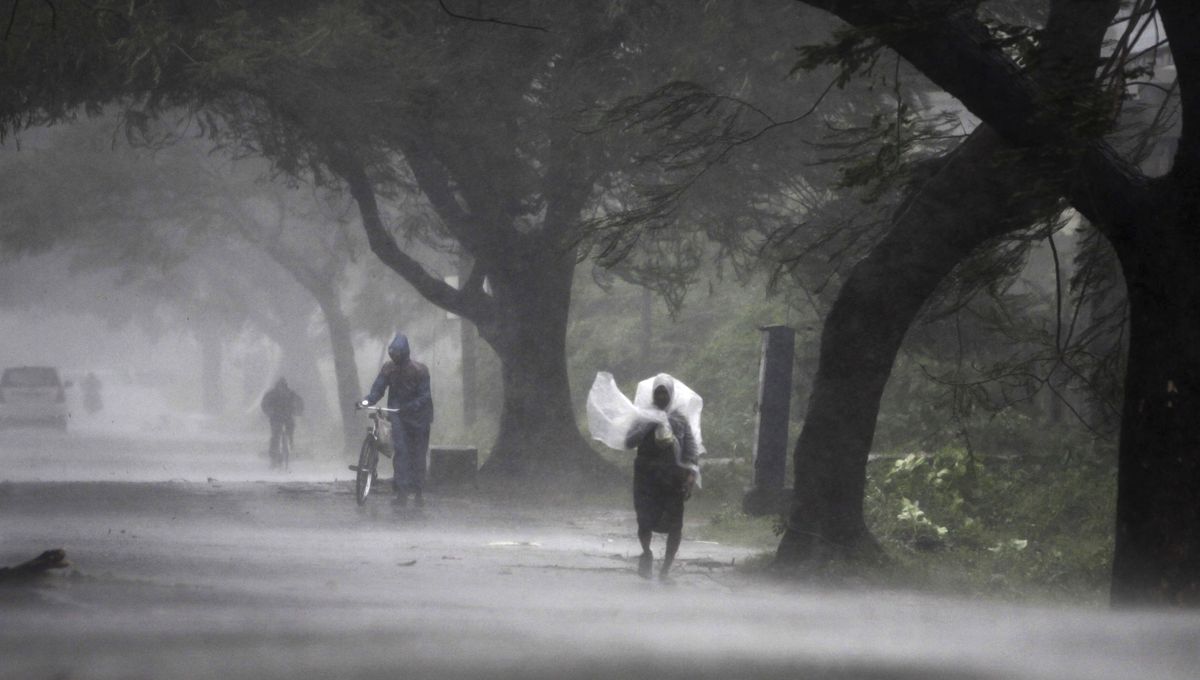Massive cyclone pounds India with winds, rain
500,000 evacuate amid power, phone blackouts

BEHRAMPUR, India – An immense, powerful cyclone that lashed the eastern Indian coast, forcing 500,000 people to evacuate and causing widespread damage, weakened today after making landfall.
Five people died in the rains that fell ahead of the storm, most killed by falling branches, Indian media reported, but the situation on the ground in many areas was still unclear early today after Cyclone Phailin made landfall the previous evening in Orissa state, and power and communications lines were down in coastal districts.
The storm, the strongest to hit India in more than a decade, washed away tens of thousands of mud and thatched-roof huts and sent seawater surging inland, before weakening after making landfall.
In the state capital of Bhubaneshwar, billboards had fallen across the city and trees were uprooted. Power and telephone poles had been knocked over by the strong gusts.
Officials in both Orissa and Andhra Pradesh state have been stockpiling emergency food supplies and setting up shelters. The Indian military has put some of its forces on alert, and has trucks, transport planes and helicopters at the ready for relief operations.
Electricity utility authorities in Orissa had switched off the power in 12 coastal and other districts in the path of the cyclone after scores of electric pylons had toppled due to the torrential rain and high winds after the cyclone hit the region.
With some of the world’s warmest waters, the Indian Ocean is considered a cyclone hot spot, and some of the deadliest storms in recent history have come through the Bay of Bengal, including a 1999 cyclone that also hit Orissa and killed 10,000 people.
U.S. forecasters had repeatedly warned that Phailin would be immense, and as the cyclone swept across the Bay of Bengal toward the Indian coast Saturday, satellite images showed its spinning tails covering an area larger than France.
Roads were all but empty Saturday as high waves pounded the coastline of Orissa state. Seawater pushed inland, swamping villages where many people survive as subsistence farmers in mud and thatch huts.
A few hours before it hit land, the eye of the storm collapsed, spreading the hurricane force winds out over a larger area and giving it a “bigger damage footprint,” said Jeff Masters, meteorology director at the U.S.-based private Weather Underground.
“It’s probably a bad thing it was doing this when it made landfall. Much of the housing in India is unable to withstand even a much weaker hurricane,” Masters said.
He also said coasts would not be alone in suffering heavy damage. “This is a remarkably strong storm. It’s going to carry hurricane-force winds inland for about 12 hours, which is quite unusual,” Masters said.